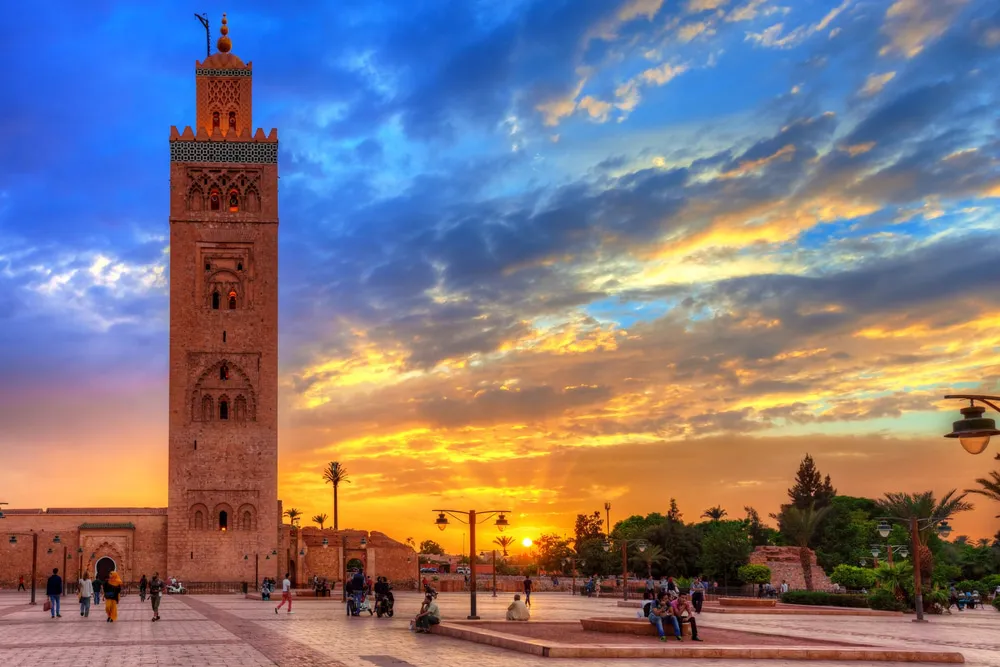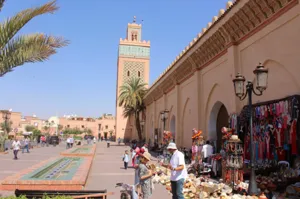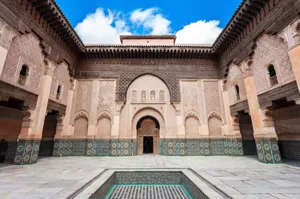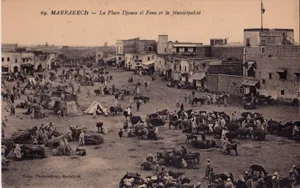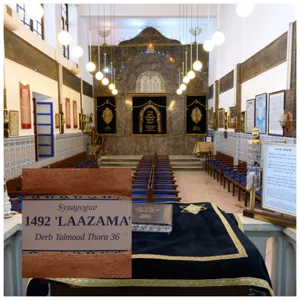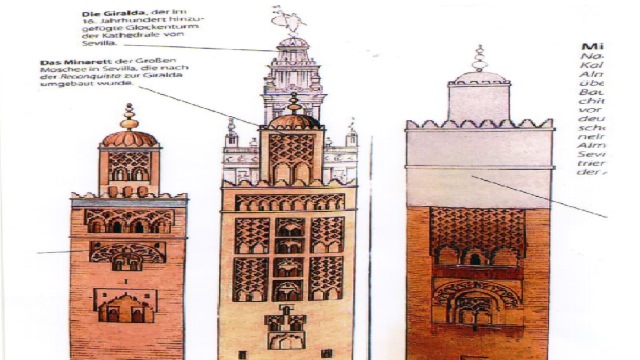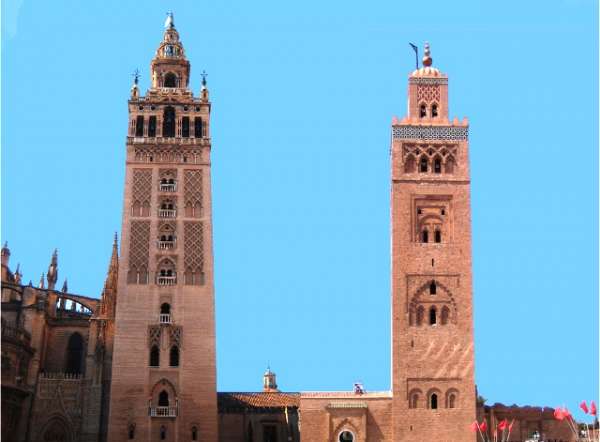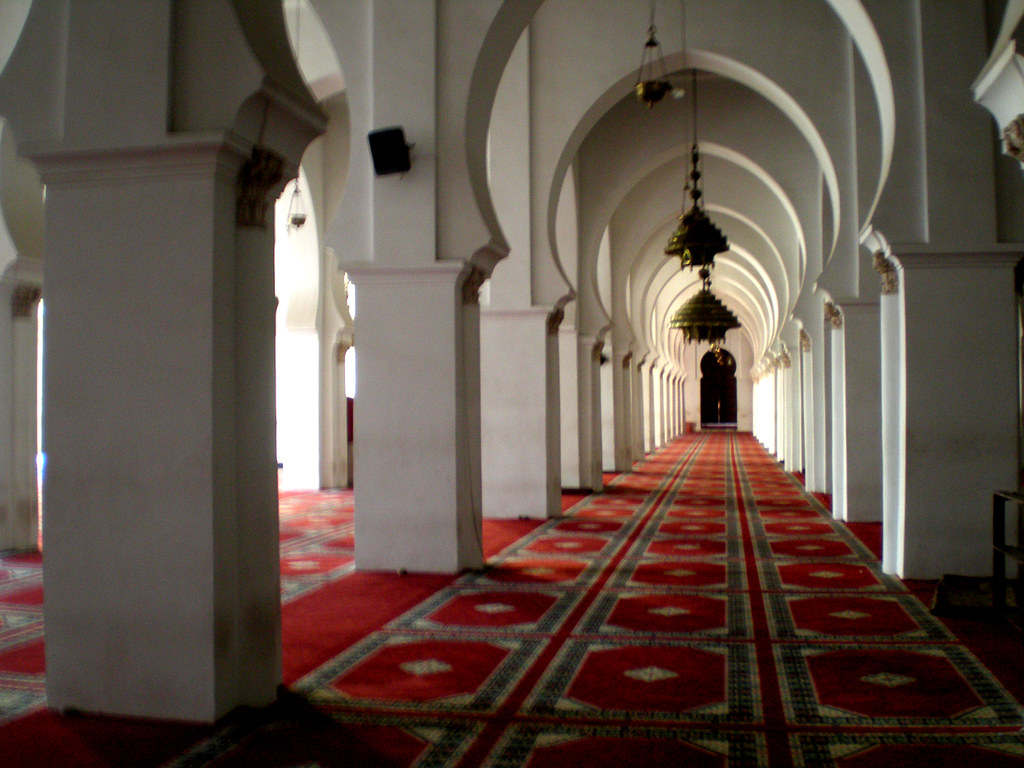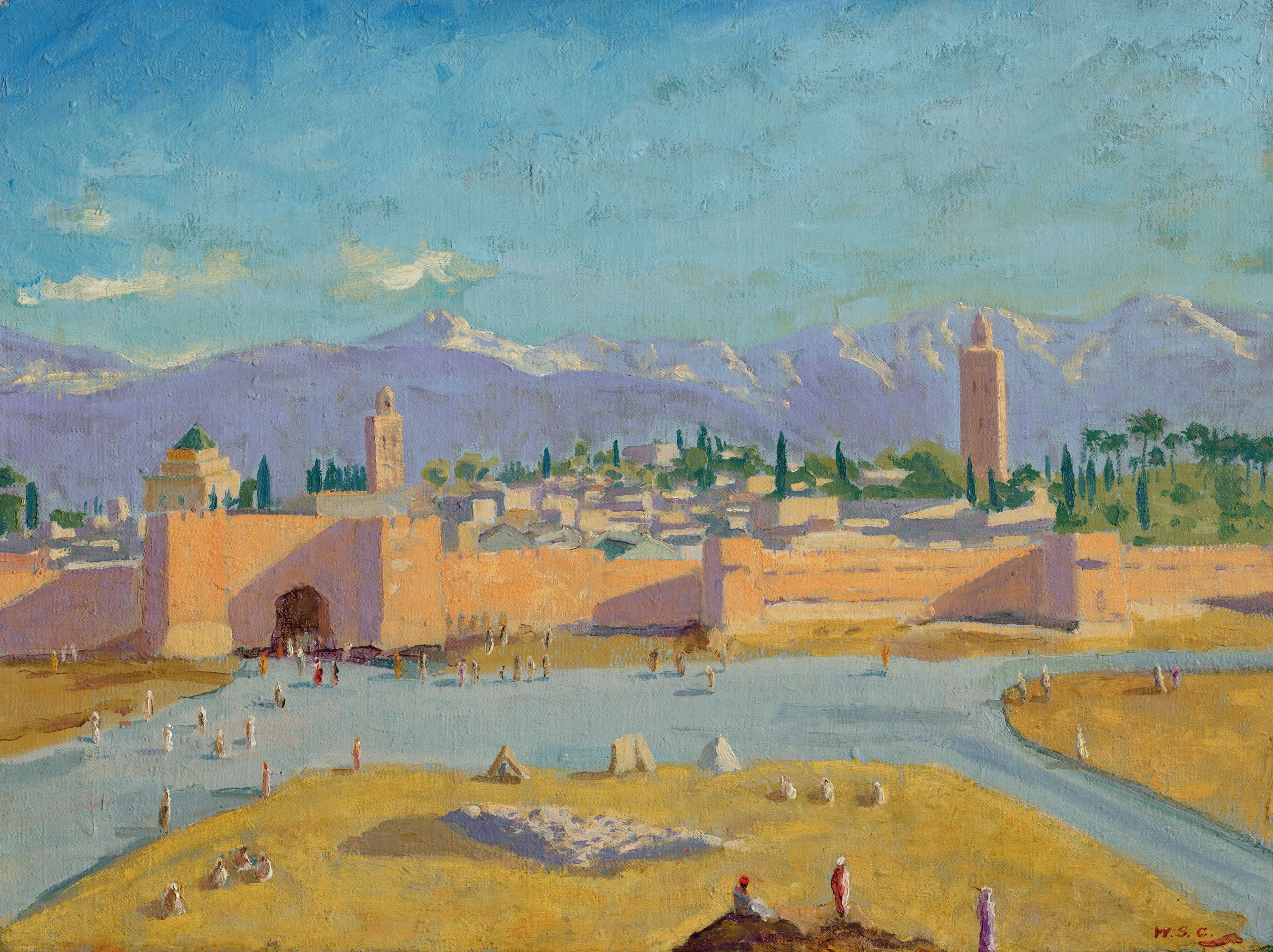Content
Who built the Koutoubia?
When was the Koutoubia Mosque built?
What materials did they use?
Koutoubia Mosque Facts
Visit Hints
Koutoubia architecture
Who built the Koutoubia?
The Almohads built the Koutoubia mosque when they took control of the city of Marrakech.
The Almohads did not want any of the religious monuments that the Almoravids built.
This is because of the extreme enmity between them. And because they believed that the Almoravids were among the heretics.
The Caliph who triumphed decided to build the Kutubiyya Mosque. He chose the land of the palace that the Almoravid leader inhabited.
When was the Koutoubia Mosque built?
The Koutoubia mosque was the first mosque that the Almohads built.
The construction started in 1147 and ended in 1157. This was during the reign of the Almohad caliph, Yaqoub al-Mansur.
The mosque underwent many changes until the end of the twelfth century.
What materials did they use?
This monument was built with sandstone. It was brought from Mount Gueliz in Marrakesh.
To reduce the weight of the minaret, they put small stones with bricks in their upperparts.
They covered the minaret with a layer of lime paint. The wall has been decorated with fake rendering lines to cover the faults of stone-cutting (traces are still visible).
The design of the Koutoubia minaret is the same as the Giralda tower in Seville or the Hassan minaret in Rabat.
Related posts
Koutoubia Mosque Facts
1. The Koutoubia has two sisters
The Koutoubia minaret, the Hassan minaret in Rabat, and the Giralda tower in Seville are sisters.
![koutoubia hassan giralda]()
Koutoubia, Giralda, and Hassan
The Almoravid Sultan Yaqoub al-Mansur ordered their construction.
![giralda-koutoubia]()
Koutoubia and Giralda
They are built over the same longitude straight line from Seville, through Rabat, to Marrakesh.
2. Why does a mosque have minarets?
The minaret provides a high point from which we made the call to prayer. And the muezzin is the person who chants the call for prayer.
3. What is the white flag on top of the minaret?
There is a helmet at the top of the dome of the muezzin’s room. The muezzin raised the white flag at the time of the call to prayer. So people saw it from far away even if the voice of the muezzin did not reach them. And then reduced after.
4. The Koutoubia minaret is the highest tower
The Koutoubia Mosque is the largest in Marrakesh, and its minaret is the tallest building. You can see it from anywhere in the city.
5. The origin of the name
A long time ago, there used to be a book market next to the mosque. And the name Koutoubia comes from the Arabic word for the bookseller.
6. Non-muslims can not access the Koutoubia's inside
Only Muslims are authorized inside the mosque. Non-Muslims can only admire the mosque from outside.
Having seen the inside, I would say you're not missing something big.
Old Moroccan mosques are very average on the inside and have some to no decoration.
Walk to the back of the mosque, and check out the foundations of the old mosque. That's more interesting.
7. Winston Churchill Painted The Koutoubia Tower
![The Koutoubia Tower By Winston Churchill]()
The Koutoubia Tower By Winston Churchill
During WWII, Winston Churchill painted The tower of the Koutoubia Mosque. This painting is the only painting that Britain's prime minister completed during the 1939-45 fight.
Angelina Jolie, who owned the painting, sold it at auction on March 2021 for more than US$11.5 million. This figure is a record for Britain's wartime prime minister. The preceding record price for a Churchill painting was 1.8 million pounds.
Visit Hints
- I wouldn't schedule a specific visit only to see the minaret.
- Be Careful of pickpockets. My phone was stolen while I was near the mosque.
- The nearby gardens need to be cleaned and reorganized.
- The vendors and beggars nearby the mosque make the square less appealing.
Koutoubia architecture
With a height of about 67.5 m, the Koutoubia minaret has the same perpendicular shape as the western Islamic minarets.
The minaret appears from the outside in the form of a square building with a long base with a length of about 13 meters. It is composed of six floors as it appears from its windows.
A set of windows occupy the four facades of the minaret. They have various types of forms. Including pointed, round, lobed, and horseshoe-shaped. These windows are arranged in a way that aligns with the stairs that lead to the top of this minaret.
The walls of the minaret base are decorated with various motifs. The geometrical motifs characterize Islamic art. And it is a distinctive style of Morocco and Andalusia decoration.
On the upper surface of the minaret, we find the room of muezzin. This room looks like a small tower with the same external architectural body as the minaret base.
A ribbed dome covers the muezzin room. It appears like an arrow rogue to space.
